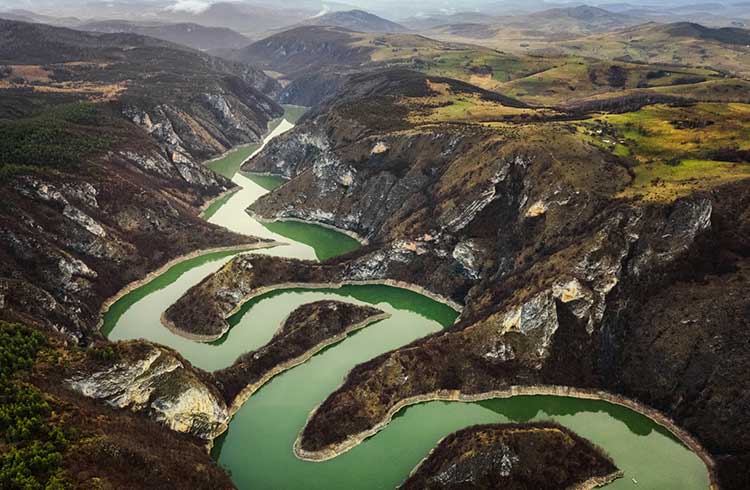Serbia and its Borders: Essential Tips for Travelers
While Serbia is still recovering from a period of intense fighting and war, there are opportunities for you to experience the warm and welcoming local hospitality.
 Photo © Getty Images/Posnov
Photo © Getty Images/Posnov
Serbia is finally sorting itself out and the opportunities to travel there are beginning to become inviting. But while Serbia looks destined to put the past behind itself, civil tensions aren't far from the surface. And as a country that has for centuries simmered with religious and cultural differences, most grudges can't be forgotten in a few years.
A colorful past
Serbia seems to have always been a country split. Conquered by the Slavs, the Romans and the Ottomans, Serbia has always been a country with an ethnic mix and one struggling to have a true identity of its own.
Its history didn't get any easier in the 20th century. Following World War II, Serbia was amalgamated into Yugoslavia. It was this joining of territories, that would impact so heavily on the already burdened Serbia.
Since the 1990's the small eastern European country has been wracked by internal and external strife.
The Yugolsav Wars (1991 - 1995) saw a series of conflict between Serbia and its neighbours, Croatia and Bosnia. Often described as Europe's deadliest conflicts since World War II, they have become infamous for the war crimes they involved, including mass ethnic cleansing.
These wars ended in 1995. But conflict wasn't over. Serbia also partook in a war against Kosovo, which claimed thousands of lives and ended only after NATO/UN intervention.
Many of Serbia's politicians and military leaders faced trials for crimes against humanity. A truly ugly time for Serbia and its people
Serbia today
Despite past tensions and conflicts, Serbians, particularly those who are young are looking forward to the future as tourism ramps up in the country. It has given locals great opportunities to show their culture and country to visitors.
The occasional protest or demonstration still does happen. Peaceful anti-government protests have been held frequently since April 2017, causing traffic issues so best to steer clear if possible.
Protesters can be aggressive and dangerous, and government forces usually don't tolerate dissent, so a heavy-handed approach is often the first and last response.
Demonstrations in 2009 and 2010 have turned violent with dozens injured and property destroyed.
All along the watchtower
The conflict against Kosovo is a scar on Serbia's past ethnic cleansing, refugees and war crimes. The border between the two regions remains tense and should be avoided . Intermittent violence and unrest is endemic on the border between Serbia and Kosovo, so do yourself a favour and leave the area to locals and military forces.
The greatest danger though to travellers moving through the area is unexploded land mines. These terrible weapons of war have been left over from the conflict in 1999 and dot the countryside near the border.
No fireworks
Just a quick note about celebrating in Serbia: avoid the use of fireworks. Indiscriminate use of "cherry bombs" and firearms often result in what is called "happy fire", a nice term for accidental injury.
Each year in Serbia, people are injured by the misuse of fireworks and firearms at celebrations.
Down south
Southern Serbia is often a hot bed of civil tensions that can sometimes become violent.
Clashes between security forces and armed groups associated with separatist movements are common and have turned deadly.
Areas like Presevo and Bujanovac are often linked to violence in the country's southern regions bordering Kosovo.
Throughout the 2000s, clashes between Serbian police and ethnic Albanian militia groups in the Presevo Valley, became commonplace.
But the news isn't all bad -there does seem to be some future for southern Serbia. International watchers are calling the region one of the rare conflict resolution success stories in the former Yugoslavia. Since 2007, incidents have decreased however it is best to exercise caution when traveling in this part of the country.
It is also important to stick to marked roads and pathways clearly labelled by the local de-mining authority as there are still unexploded landmines left over from conflicts past.
Simple and flexible travel insurance
You can buy at home or while traveling, and claim online from anywhere in the world. With 150+ adventure activities covered and 24/7 emergency assistance.
Get a quote
No Comments